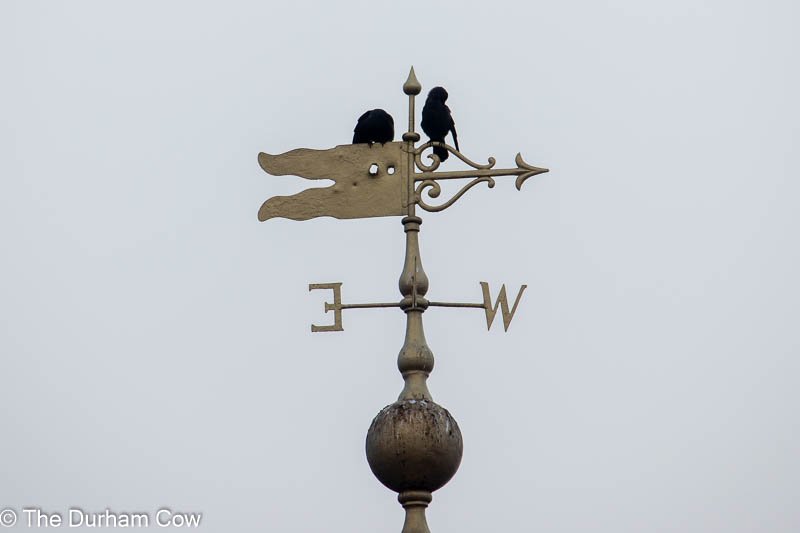Visitors to Barnard Castle will be hard-pressed to miss a distinctive two-storey building acting as a roundabout at the junction of The Bank, Newgate and Market Place in Barnard Castle. Since its construction in 1747 the Market Cross – also known as the ‘Market Hall’, ‘Butter Market’ and ‘Butter Mart’ – has been used as a courtroom, fire station, gaol, dairy market, toll booth (demolished 1808) and town hall.
On the inside of the octagon you’ll find Lord Barnard’s crest while, on the outside, a hand-painted stone panel declares the building as Thomas Breaks’ gift to the town. Breaks was a prominent wool merchant who commissioned the structure to be built at his own expense, to provide a sheltered area where wives of the town’s farmers could sell their wares, giving rise to another unofficial title of “Breaks’ Folly”. But the building had its critics: from the day it was built there were complaints that it “spoiled the views, stifled the circulation and hindered carts travelling up and down The Bank”.
In his book The Buildings of England Nikolaus Pevsner describes Barnard the Market Cross as: “an octagon of 1747 surrounded by a Tuscan colonnade with a pent roof”. He continues: “open arches all round on the ground floor [and] on the upper floor (made into a courtroom in 1814 with a jury gallery of 1826) alternating Venetian windows and niches”. Finally, “on top, an open cupola”. However, he fails to mention the bell inside, which is a remnant of its service as a fire station. On top of the cupola – again not mentioned by Pevsner – is a distinctive weather-vane which, if you look carefully, sports two small holes in its pennant claimed to have been caused by musket balls.
In 1804 a couple of locals, one a soldier of the Teesdale Volunteer Legion by the name of Taylor and the other, a gamekeeper on the Earl of Strathmore’s estate at Streatlam named Cruddas, were arguing over who was the better shot. To clear up the matter they decided to have a contest and chose the weather-vane as the target making it unlikely that the contest will ever be repeated in the modern age.

If they shot from the Turk’s Head Inn on Market Place – as at least one account claims – it would be a distance of almost exactly 100 metres making the precision of both shots scarcely credible. A decade before Waterloo, the British Army was still using the venerable ‘Brown Bess’ musket. This was a smooth bore weapon accurate only to around 30 metres. Although more accurate ‘rifles’ existed there is no suggestion that such a weapon was used.
In 2017, an alternative hypothesis was suggested by Gordon French, a retiring gunsmith from Barnard Castle. He considers it more likely that the men would have shot from James Rowntree’s shop. Rowntree was a local gunsmith at the time, whose premises were much closer to the target. Given that both holes look so similar (despite hitting from different directions) perhaps he also supplied the weapon? Sadly however, details and particularly the winner’s name, appear to have been lost to posterity.
References
Chrystal, Paul. Barnard Castle & Teesdale Through Time. Amberley Publishing, 2013.
Lloyd, Chris. “Still Crazy After All These Years.” Telegraph & Argus, 16 October 2015, https://www.thetelegraphandargus.co.uk/news/13874606.amp/. Accessed 12 November 2020.
Pevsner, Nikolaus, and Elizabeth Williamson. The Buildings of England. County Durham ed., Yale University Press, 2002.
Teesdale Mercury. “Shot down: Town loses historic link with guns.” Teesdale Mercury, 29 October 2017, http://teesdalemercury.blogspot.com/2017/10/shot-down-town-loses-historic-link-with.html. Accessed 12 November 2020.

